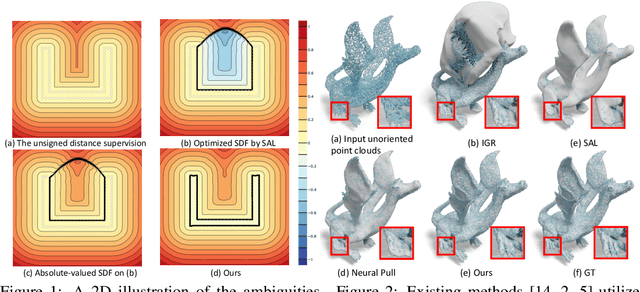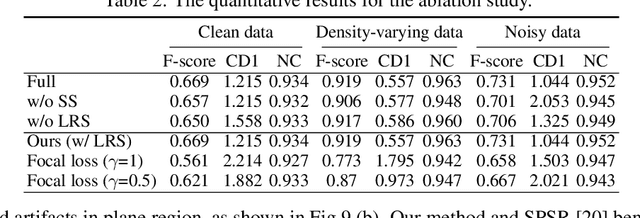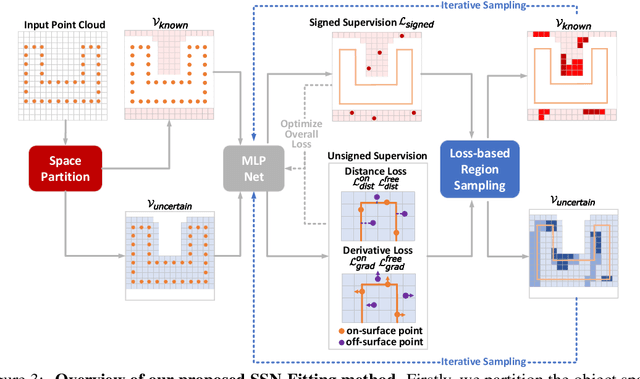Semi-signed neural fitting for surface reconstruction from unoriented point clouds
Paper and Code
Jun 14, 2022



Reconstructing 3D geometry from \emph{unoriented} point clouds can benefit many downstream tasks. Recent methods mostly adopt a neural shape representation with a neural network to represent a signed distance field and fit the point cloud with an unsigned supervision. However, we observe that using unsigned supervision may cause severe ambiguities and often leads to \emph{unexpected} failures such as generating undesired surfaces in free space when reconstructing complex structures and struggle with reconstructing accurate surfaces. To reconstruct a better signed distance field, we propose semi-signed neural fitting (SSN-Fitting), which consists of a semi-signed supervision and a loss-based region sampling strategy. Our key insight is that signed supervision is more informative and regions that are obviously outside the object can be easily determined. Meanwhile, a novel importance sampling is proposed to accelerate the optimization and better reconstruct the fine details. Specifically, we voxelize and partition the object space into \emph{sign-known} and \emph{sign-uncertain} regions, in which different supervisions are applied. Also, we adaptively adjust the sampling rate of each voxel according to the tracked reconstruction loss, so that the network can focus more on the complex under-fitting regions. We conduct extensive experiments to demonstrate that SSN-Fitting achieves state-of-the-art performance under different settings on multiple datasets, including clean, density-varying, and noisy data.
 Add to Chrome
Add to Chrome Add to Firefox
Add to Firefox Add to Edge
Add to Edge